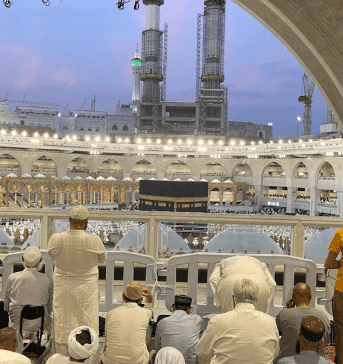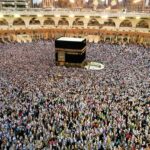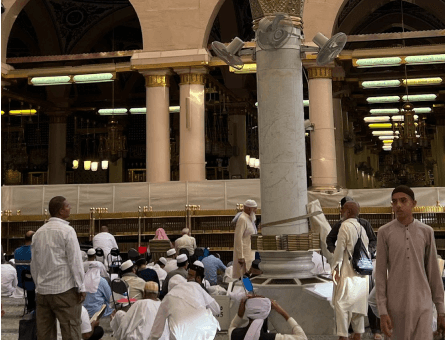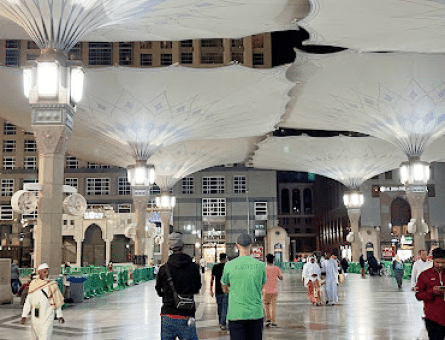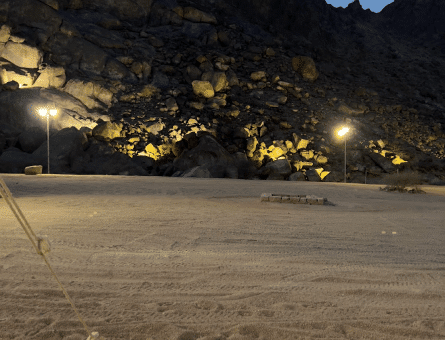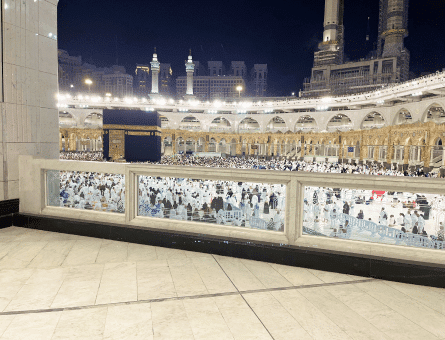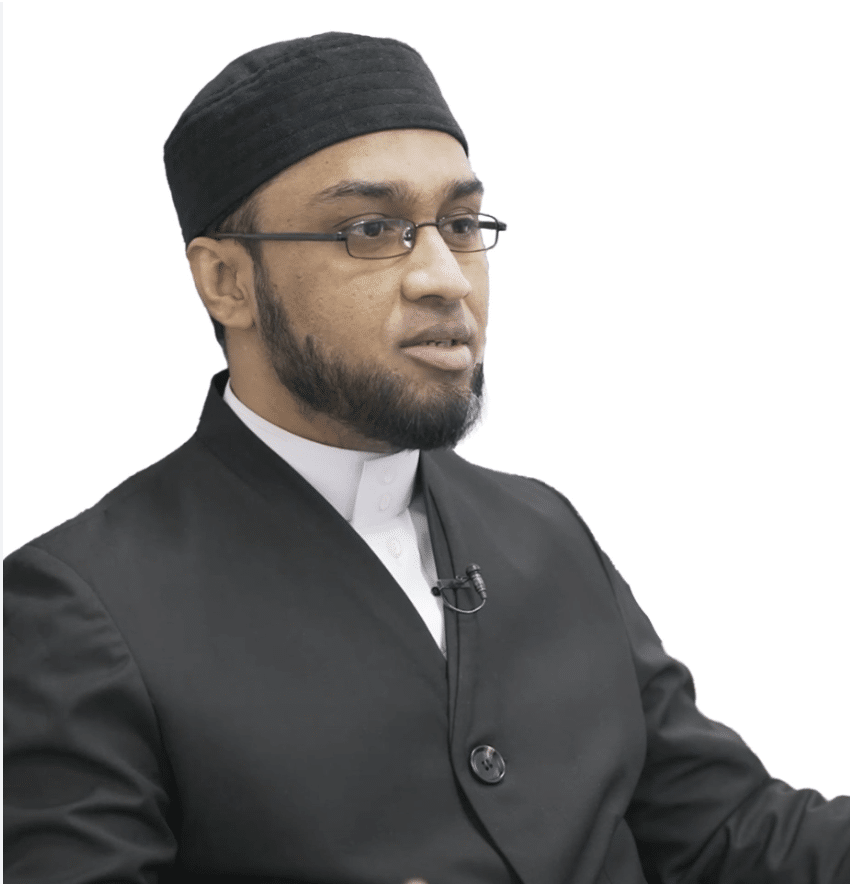The Prophet’s Hajj – How many times did prophet Muhammad (SAW) perform Hajj and Umrah
How many times did Prophet Muhammad (PBUH) perform Hajj and Umrah? Even though there are different narrations regarding the exact number of times the beloved Prophet (PBUH) of Allah SWT performed the annual pilgrimage, most of the companions have reported that Prophet Muhammad (PBUH) performed Hajj (also known as Hajjat ul-Wada) only once in his lifetime in 10 AH (632 CE).
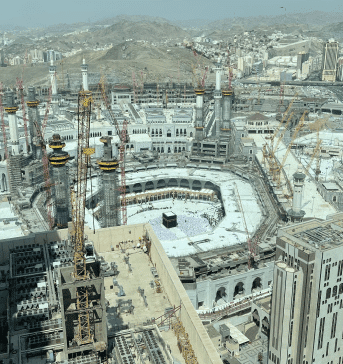
Knowing that it would be his last pilgrimage, Prophet Muhammad (PBUH) set forth a model of Hajj, which has been followed and performed since then. It is reported in detail in Hadith literature that Allah SWT’s Messenger (PBUH) performed Umrah four times throughout his life.
A few months later, Prophet Muhammad (PBUH) passed away peacefully in Madinah. Therefore, the final pilgrimage is considered to be the culmination of Prophet Muhammad’s (PBUH) life’s work.
Keep reading to learn more about the Prophet‘s (PBUH) Hajj and Umrah.
History of Hajj
After ten years of prophethood, Prophet Muhammad (PBUH) resided in Madinah. However, during this period, he (PBUH) did not once perform Hajj, even though the Prophet (PBUH) of Allah SWT had performed Umrah three or four times.
In the 8th year of Prophethood (8 AH, 630 CE), Prophet Muhammad (PBUH) had gained enough political and religious authority to conquer the sacred city of Makkah. He was born and raised in this city. After creating a thorough strategic plan, Prophet Muhammad (PBUH), along with his companions, entered the premises of Makkah and conquered it peacefully.
He (PBUH) later destroyed all the idols in the Holy Kaaba, purifying it as the House of the one and only Allah SWT.
Following the conquest of Makkah and victory in the Battle of Tabuk, Arab tribes from all over the Saudi Arabian peninsula came to accept Islam and form an allegiance with the Messenger (PBUH) of Allah SWT.
In the Year of Delegations (9 AH), Prophet Muhammad (PBUH) stayed in Madinah to spread Islam. It is believed that in the same year, Allah‘s SWT Messenger (PBUH) received a revelation that commanded pilgrimage to Makkah for the Muslim Ummah:
However, because Prophet Muhammad (PBUH) was busy with the delegations, he couldn’t go. Therefore, he appointed his beloved companion, Abu Bakr (RA), as the pilgrimage leader. He (PBUH) also appointed Ali ibn Abi Talib (RA) to reveal the following verses to the pilgrims:
Humaid ibn Abdur Rahman (RA), in reference to the historical Hajj, reported that Abu Hurairah (RA) narrated,
Abu Huraira added:
It is believed that the pilgrimage performed under the leadership of Abu Bakr (RA) was actually a preparation for the Final Pilgrimage, which was to be carried out by the Prophet (PBUH) of Allah SWT the following year.
Now that the Holy Kaaba was purified, Prophet Muhammad (PBUH), at the beginning of 10 Hijrah, announced his intention to perform Hajj and invited the Muslim Ummah to accompany him.
Jabir ibn Abdullah (RA) narrates,
How many times did Prophet Muhammad (PBUH) perform Hajj and Umrah?
Hajj is one of the pillars of Islam and it obligatory upon those who can take the journey. Every year, millions of Muslims worldwide gather on the grounds of Masjid Al-Haram to perform the annual pilgrimage.
While carrying out the ritual of pilgrimage (Hajj and Umrah), Muslims follow the guidelines taught by the beloved Prophet Muhammad (PBUH).
When was Hajj performed?
Prophet Muhammad (PBUH) performed Hajj once in 10 AH after migrating to Madinah (formerly known as Yathrib). It is said that prior to the migration, Allah SWT’s Messenger (PBUH) performed the annual pilgrimage several times.
- Every Year: Ali ibn al-Athir (RA), a famous scholar, reported that before the migration to Madinah, the Messenger (PBUH) of Allah SWT carried out Hajj every year. In light of this narration, Imam ibn Hajar Al-Asqalani (RA) wrote: “The Prophet Muhammad (PBUH) performed Hajj every year prior to the migration, never missing the Hajj once whilst in Makkah. Even during Jahiliyyah, the Quraysh never failed to perform the pilgrimage. Only those who weren’t present in Makkah or were sick missed it. Therefore, if those from the pre-Islamic era never missed the Hajj and saw it as their distinction over others, how can we accept that the Prophet Muhammad (PBUH) ever missed the Hajj? Especially when it is proven from the Hadith of Jubayr ibn Mut’im I that during the era of Jahiliyyah, he witnessed the Prophet Muhammad (PBUH) standing (performing Wuquf) at Arafat.”
- Many Times: Sufyan al-Thawri (RA) narrated that Prophet Muhammad (PBUH) undertook many pilgrimages before the migration.
- Three Times: According to a narration of Abdullah ibn Abbas (RA), Prophet Muhammad (PBUH) performed Hajj three times after the announcement of prophethood and before the migration to Madinah.
When was Umrah performed?
According to Islamic history, Prophet Muhammad (PBUH) performed four Umrahs after migrating to Madinah. It is reported that Allah’s SWT Messenger (PBUH) adorned the Ihram for all four Umrahs, three of which were in the sacred month of Dhul Hijjah.
Abdullah ibn Abbas (RA) said,
- First Umrah – Umrah of Hudaibiyah (6 AH): Six years after prophethood, Prophet Muhammad (PBUH), along with his companions, wore the Ihram and set out on a journey towards Makkah with the intention to perform Umrah. However, soon after the caravan reached the western edge of the city, Hudaibiyah, they were stopped by the Quraysh from entering. In order to prevent a war and allow the Muslims to perform pilgrimage, a treaty of peace was signed between the Quraysh and the Muslims. The treaty was later named the Treaty of Hudaibiyah. In accordance with the terms of the treaty, Muslims were told to return to Madinah and come back the following year to perform Umrah. However, before returning to Madinah, the Muslim caravan, along with Prophet Muhammad (PBUH), shaved their heads, performed sacrifices, and left the state of Ihram.
- Second Umrah – Umrat al-Qada (7 AH): Following the terms of the Treaty of Hudaibiyah, Prophet Muhammad (PBUH) and his companions were allowed to enter Makkah to perform Umrah. It is said that Prophet Muhammad (PBUH) remained in Makkah for three days. The Umrah is also known as Umrat al-Qada (The Fulfilled Umrah) or Umrat al-Qisas (The Umrah of Retribution).
- Third Umrah – Umrah from Ji’rana (8 AH): On his way back from Taif, after dividing the booty from the Battle of Hunayn, Prophet Muhammad (PBUH) performed Umrah from Ji’rana. Muharrish Al-Kabi (RA) reported, “The Messenger (PBUH) of Allah SWT left al-Ji’ranah during the night for Umrah before entering Makkah and performing Hajj. He departed during the same night, reaching al-Ji’ranah by the morning. It was as if he had spent the night there.”
- Fourth Umrah | Umrah with Hajj (10 AH): After the conquest of Makkah, in 10 AH, Prophet Muhammad (PBUH) performed Umrah along with Hajj. The Messenger (PBUH) of Allah SWT entered Masjid Al-Haram in the state of Ihram and carried out Umrah rituals in the month of Dhul Hajj.
Who Performed the First Hajj?
In the year 10 AH (632 CE), Prophet Muhammad (PBUH), along with 1400 followers, set out to Makkah, Saudi Arabia, to perform the first-ever Hajj (annual pilgrimage) in Islam, reestablishing the traditions of Prophet Ibrahim (AS).
Types of Hajj and Umrah Performed by Prophet Muhammad (PBUH)
Prophet Muhammad (PBUH) performed the following types of Hajj and Umrah:
- Umrat al-Qada (The Fulfilled Umrah): It was performed in 7 AH, one year after the Treaty of Hudaibiyah. Prophet Muhammad (PBUH), along with over 1400 companions, resided in Makkah for three days before returning to Madinah. This is also known as the Umrah al-Qisas (The Umrah of Retribution).
- Umrah in Conjunction with Hajj: The Messenger (PBUH) of Allah SWT performed Umrah in the month of Dhul Hijjah alongside Hajj.
- Hajjat Ul-Wida: In 10 Hijrah, Prophet Muhammad (PBUH) carried out Hajjat Ul-Wida (the Farewell Hajj). This was the first and last pilgrimage performed by the Prophet (PBUH). It is the same Hajj in which Prophet Muhammad (PBUH) delivered the last sermon.
Last Hajj Performed by Prophet Muhammad (PBUH)
Prophet Muhammad (PBUH) performed the first and last Hajj in the holy month of Dhul Hijjah on 10 AH (632 AD). On 9th Dhul Hijjah, Allah SWT’s Messenger (PBUH) delivered the last sermon in the Uranah Valley of Mount Arafat in Makkah, Saudi Arabia.
Hadiths about Hajj and Umrah
Abu Hurairah (RA) narrated that,
Ibn Abbas (RA) reported that Prophet Muhammad (PBUH) said,
On another occasion, Abu Hurairah (RA) said that the Messenger (PBUH) of Allah SWT stated,
Prophet Muhammad (PBUH) once said an
In another event, it is reported that Prophet Muhammad (PBUH) said,
Summary – Prophet’s (PBUH) Hajj
Each pilgrimage carried an important lesson and played a significant role in moulding the religion of Islam for generations to come.
Today, over 2.5 million people visit the Holy Kaaba every year to perform the annual Hajj pilgrimage while following the Sunnah of Prophet Muhammad (PBUH).
Explore The New Pilgrim App
The Ultimate App
for Hajj and Umrah!


